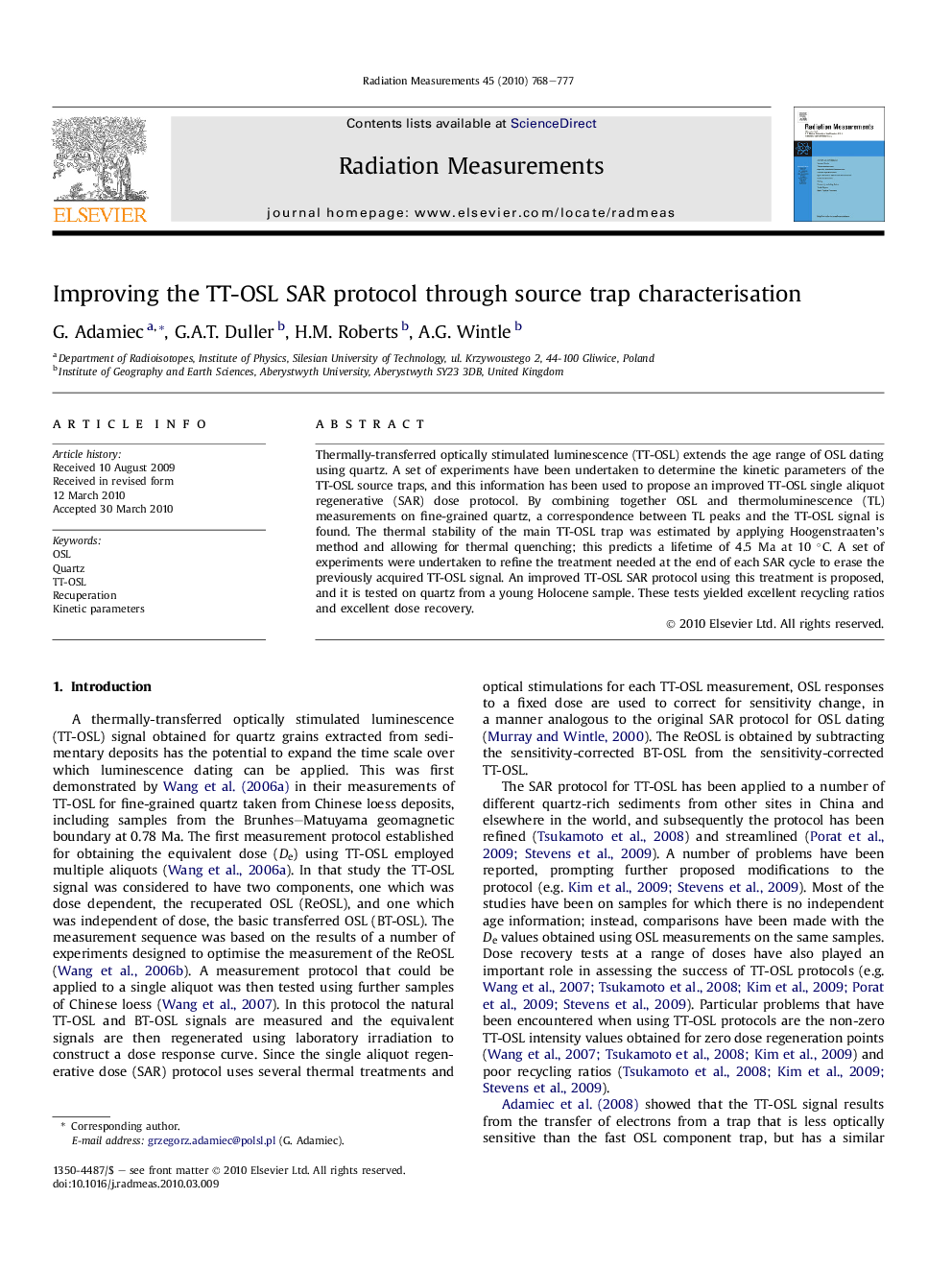| Article ID | Journal | Published Year | Pages | File Type |
|---|---|---|---|---|
| 1881541 | Radiation Measurements | 2010 | 10 Pages |
Abstract
Thermally-transferred optically stimulated luminescence (TT-OSL) extends the age range of OSL dating using quartz. A set of experiments have been undertaken to determine the kinetic parameters of the TT-OSL source traps, and this information has been used to propose an improved TT-OSL single aliquot regenerative (SAR) dose protocol. By combining together OSL and thermoluminescence (TL) measurements on fine-grained quartz, a correspondence between TL peaks and the TT-OSL signal is found. The thermal stability of the main TT-OSL trap was estimated by applying Hoogenstraaten's method and allowing for thermal quenching; this predicts a lifetime of 4.5 Ma at 10 °C. A set of experiments were undertaken to refine the treatment needed at the end of each SAR cycle to erase the previously acquired TT-OSL signal. An improved TT-OSL SAR protocol using this treatment is proposed, and it is tested on quartz from a young Holocene sample. These tests yielded excellent recycling ratios and excellent dose recovery.
Related Topics
Physical Sciences and Engineering
Physics and Astronomy
Radiation
Authors
G. Adamiec, G.A.T. Duller, H.M. Roberts, A.G. Wintle,
